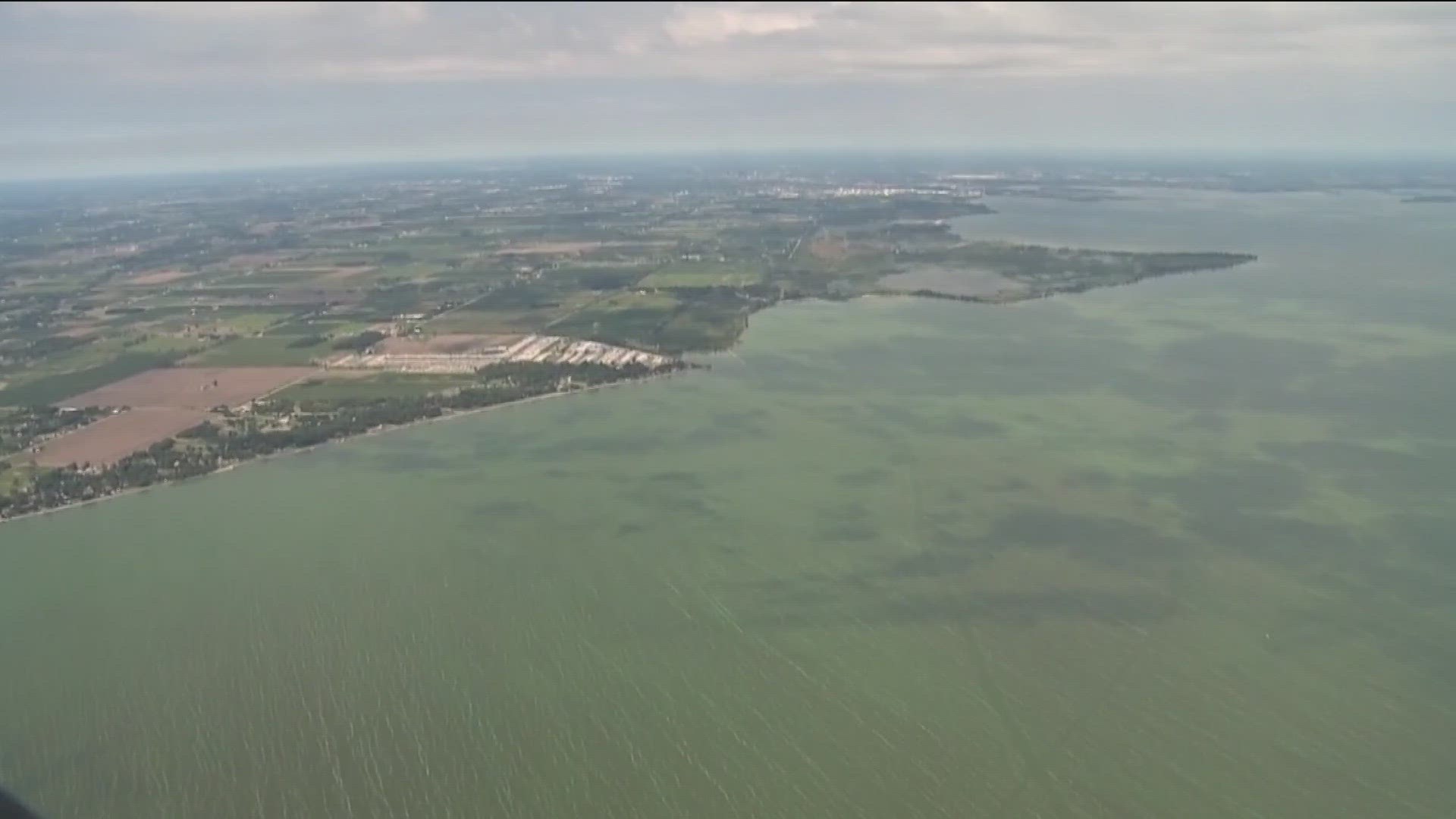TOLEDO, Ohio — A federal judge ruled Thursday that the Ohio EPA must create an action plan to address the toxic algae blooms in western Lake Erie that continue to pop up every summer.
U.S. District Court Judge James Carr approved a consent decree requiring the Ohio EPA to submit a final plan known as a Total Maximum Daily Load (TMDL) to the U.S. EPA by June 30. The ruling also established deadlines for the U.S. EPA to review the plan, and if it disapproves, complete a federal TMDL program.
The TMDL is a "pollution diet" that determines the maximum amount of pollution Lake Erie's waters can withstand while remaining safe. Judge Carr's decision ends a court battle that lasted nearly six years between the plaintiffs - the Environmental Law & Policy Center and Lucas County Commissioners - and the defendant - the U.S. EPA.
You can read Judge Carr's nine-page consent decree here.
“Though the work that today’s agreement brings is but a first step, it is a step that has to be taken," Carr said in his ruling. "How many more steps lie ahead, and how long they will take, is beyond even guessing. But there’s reason to hope that, in time, the Maumee River will no longer display, as it has for countless summers, a loathsome foul and slimy green surface as it flows through Toledo on its constant and irresistible course on to Lake Erie’s Western Basin.”
Thursday's ruling is an agreed upon settlement between the two sides. Terms were hammered out last November and the U.S. EPA published them in the Federal Register.
The case was initially filed in 2017 and refiled in 2019.
“This is a momentous day for the Lucas County Commissioners, the ELPC, and all of Ohio," Lucas County Commissioner Pete Gerken said. "This consent decree solidifies our stance that the state has the authority and has the legal responsibility to clean up Lake Erie using a TMDL plan. To effectively tackle the source of the pollution, we must reduce all phosphorous and nitrates entering the watershed.
"The most serious threat to Lake Erie comes from concentrated animal feeding operations, which are not currently regulated as polluters and continue to discharge millions of tons of animal waste directly into the watershed and ultimately into Lake Erie. The TMDL plan must serve to regulate these operations. Mandatory measurements of pollution discharges from these operations must be part of the plan. Compliance can’t be voluntary.”
The plaintiffs in this case believed the EPA was required to monitor the lake for toxins that enter from farm runoff per the terms of the Clean Water Act. For years the state refused to write a TMDL plan, but has been working on one in recent months in anticipation of Thursday's court decision.
The decree creates a 90-day federal review period. If the U.S. EPA finds the Ohio EPA's plan to be unsatisfactory, the U.S. EPA has five months to create their own plan.
RELATED VIDEO

